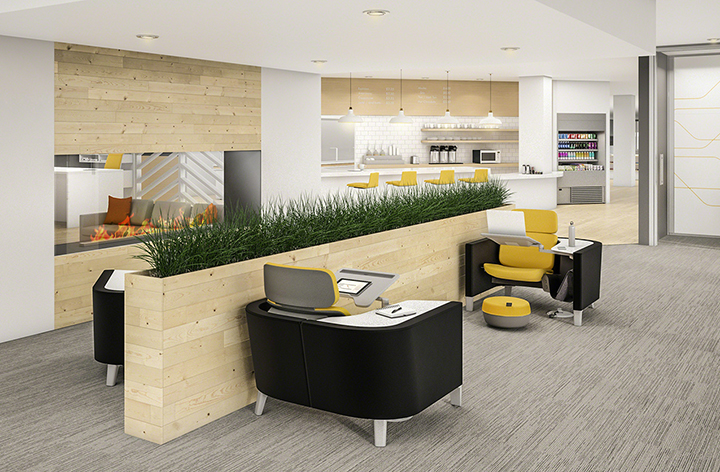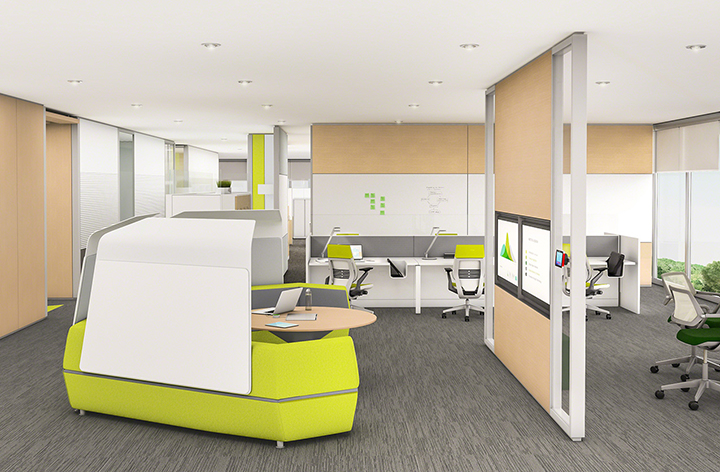The answer is simple, yes. Absolutely and positively. Because what does leadership ultimately do? They inspire employees; modelling behavior and driving a collective corporate culture that benefits the organization’s mission and strategic goals. Arguably, these skills are more essential than ever. With global locations, distributed teams and people constantly bombarded with information, leadership must use every tool in the book to cultivate the culture that they feel will strengthen the organization from the ground up. Space as it happens, is one of those tools, especially for leadership.

The culture and ethos of leadership is in and of itself changing. Organizations are not as focused on vertical hierarchy and the private office is not dangled unilaterally as the pinnacle of a successful career. Millennials are changing the game, like it or not, and we are looking at a new reality for the workplace. Today, there is a focus on transparency for all, including the leadership team. Accessibility is paramount when decisions need to be made on the fly and people need to come together spontaneously to solve problems quickly.
How a leadership team sets up their space says a lot about the corporate culture, not to mention their values and ethos. Are there lots of private offices with closed doors, high walls and impenetrable, foreboding reception spaces or are the spaces accessible and open and inviting? There is no right answer, each company will have different motives, however, it’s important that space and culture intersect and tell the same story.

Different spaces throughout the day.
There is no doubt that leadership teams also need privacy and the ability access meeting rooms and private space. Executives are constantly using different skills throughout their day, reviewing financials in one hour, meeting with customers next, and then teaming with a small group to review a product design. Yes, all of that could happen in a private office, but one could also argue that the ability to move to different spaces as the need arises is a healthier and more active way of managing your day. Not to mention that there is always that serendipitous encounter you might have when you move around, learning something that you might never have discovered had you been sequestered in your office all day.
Steelcase leadership case study.
A case in point is the Steelcase leadership team’s space. Located in a very public space on the first floor, intersecting with several different teams, the goal was for the leadership to be inclusive and tear down the barrier between them and employees. There is no reception station and people, customers and employees alike, can be seen wandering through their space. The message is loud and clear; We’re right here in the trenches with you, living and breathing the same company culture and learning from one another.
So yes, space is a huge tool in shaping corporate culture and for leadership teams, it’s an opportunity to shape behavior that shouldn’t be taken lightly. To learn more about the Steelcase leadership team’s experience – click here.


CrazyTosser
Among the strongest and most widely recognized writers on corporate culture, with a long list of articles on leadership , culture , gender and their intersection, is Linda Smircich . As a part of the critical management studies , she criticizes theories that attempt to categorize or ‘pigeonhole’ organizational culture.